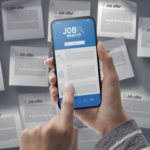The prevalence of artificial intelligence (AI) has presented businesses with tremendous opportunities. From improving efficiency and delivering more granular data to driving innovation across departments, companies across a spectrum of sectors have found success when integrating AI in their companies.
However, it’s not all sunshine and rainbows; AI has inherent flaws and issues from built-in gender biases to ethical misinformation risks and job security concerns among workforces. Without due care when deploying AI, the obstacles can be insurmountable to the point when utilising it seems like a challenge not worth pursuing.
While the risks cannot be ignored, AI remains a powerful, game-changing technology that can propel businesses forward, giving them a much-needed competitive edge in the market and taking their innovative products and services to the next level. This is why a considered, systematic approach, spearheaded by HR leaders and professionals, will give companies the best opportunity to see its potential and benefits first-hand.
This article explores the key considerations and steps that HR professionals should bear in mind when ethically and responsibly embedding AI across their organisations. By the end of this short guide, you will be given actionable advice on overcoming common bottlenecks when integrating AI, while ensuring transparency and fairness across impacted workflows and departments.
Defining Your AI Approach
Before deploying any automation or AI solutions, it’s important to clearly define their intended purpose and scope within the confines of your organisation, and whether any wider implications are at play.
Some key questions to address will include:
- What specific tasks or workflows will AI aim to augment or automate? How could this impact efficiency?
- Which teams and employees will be most impacted by AI integration? How can transparency around its implementation be ensured?
- What controls need to be put in place around data sharing, privacy and consent when capturing inputs to power AI models?
When you have an established infrastructure and stack, it’s important to consider how AI will influence your current solutions. For instance, when using AI algorithms to aggregate data and analytics for visualisation charts in reports, it’s wise to consider their accuracy and whether it’s worth upgrading or downgrading your incumbent software. Similarly, if entrusting third-party cyber security incident response specialists and organisations to monitor your networks and infrastructure, consider how the presence of AI and automation processes might impact their data and insights for threat visibility and containment.
The amount of impacted departments or suppliers can grow quickly, as recent UK labour market reports have indicated, so consider the impact that AI will have when embedding it into your firm, and define your approach based on a thorough evaluation of its potential long-term time- and cost-efficiency.
Keeping Employees in the Loop
One fundamental argument that continues to linger in the debate around AI implementation is the human implications. Not only is there continued debate around whether human workers are ‘safe’ in the age of AI, but a lack of communication and transparency in the technology’s integration is a common downfall for businesses. In fact, 64% of respondents in a PublicFirst survey believed that AI was expected to drastically increase unemployment, which cannot be ignored.
Many employees will perceive new technology and software as a job threat, and HR leaders who cannot demonstrate full accountability and awareness of its use will not ease any concerns. Be proactive from the start, explaining how AI is there as an augmentation tool to benefit employees by freeing them from mundane, routine, labour-intensive tasks and removing bottlenecks.
Explain how roles may need to adapt alongside AI rather than be replaced, and provide training opportunities for new skills and capabilities that teams may need to comfortably and assuredly work alongside AI.
Foster Understanding of AI Restrictions
While AI is, at its core, a deep-learning computer programme it’s important to not get carried away. The reality of AI is far more nuanced; it has clear limitations and flaws, in that it cannot replicate human experiences or emotions, lacks general intelligence, and is prone to breaking, among others.
HR leaders should be realistic about where AI lacks, and highlight how humans firmly ingrained in the team are not at risk of being supplemented by a programme that cannot think creatively or independently. While generative AI – as an example – can undoubtedly deliver content like text, data, or images on request and at speed, it’s no replacement for an evocative and experienced human creative. Human oversight is still required to verify AI-generated content for legitimacy and validity, not least to prevent the spread of potentially dangerous discourse and misinformation.
AI today is narrow, excelling at specific tasks rather than possessing broad intelligence across a range of industries and real-world experience. Govern, supervise, and quality-check AI output to ensure that programmes function as intended, existing in a specific silo. Employees should recognise AI as a supporting tool which cannot replicate human skills and experience, much less replace them.
Putting People at the Heart of AI Integration
The most responsible approach to integrating AI in business puts people – employees and customers alike – at the centre of discussions and deployment.
At the very least, it’s important to check for and mitigate hidden biases which could propagate unfair or misinformed outcomes. Conduct user research, surveys, and interviews to confirm any suspicions about AI content legitimacy and refine your approach from there.
Fundamentally, however, as HR leaders, your success in AI implementation will be influenced by how human-centric you can keep the process. Keep roles defined and meaningful, rather than automating as many areas as possible. Enable employees to verify, override, or provide context to AI where required. Gather user feedback on satisfaction, issues, and suspicions. Consider involving stakeholders too, as their input will also provide additional viewpoints and factors to consider in AI’s wider deployment.
While it can be tempting to look at AI with rose-tinted glasses, the real-world implications of its unsupervised use are severe. Rather than cast a wide net and embed it fully across departments, consider identifying one or two specific areas that could be left to algorithms and see whether productivity is enhanced.
Any issues or imperfections should inform tweaks and adjustments where human teams can feel legitimately supported and augmented, rather than distracted and frustrated. Even in the proverbial ‘AI age’ of today, human job satisfaction is still a pressing matter that must be taken seriously alongside AI adoption for key tasks.
Navigating Legal Concerns
On the whole, there remains an alarming lack of regulation and legislation around AI. That said, HR teams will invariably be cognizant of areas where compliance is of utmost importance, notably data privacy, employment law, and others.
HR leaders should evaluate data risks that could unknowingly identify or unfairly profile individuals through AI-powered data consolidation, as an example. GDPR breaches and fines can be severe even if individual data was somehow exploited or publicised due to an AI algorithm error or lapse in execution.
As AI becomes more integrated across company workflows, consider employment legislation changes. Will workers need to be retrained or upskilled to bridge any gaps? It’s worth noting that dismissing employees due to the presence and prevalence of AI poses huge moral conundrums and potential PR disasters for employers. Be considerate and upfront about the knock-on effect on people’s employment, consulting independent reviews of AI systems where possible.
The legalities of AI will continue to shift and evolve across regions, so bear this in mind as you begin identifying small areas to automate before laterally moving AI across other workflows.
Empowering a Responsible AI Culture
While putting policies and structures in place will help mandate AI influence across the board, a fundamental piece of the puzzle remains to nurture an ethical AI culture from the top down.
Emphasise ethics and transparency as much as productivity and performance, putting your teams in charge of AI software’s execution and influence. Incentivise its use somehow by tying promotions and bonuses to ideation and consistency in applying AI responsibly.
Education remains the most important of all; consider immersing teams in cross-functional training on the ethical and safe use of AI to prevent any misuse. Ensure that all staff are fluent and capable of using AI for its intended purpose (identified at the approach stage) while empowering them to identify improvements and more effective uses for the technology. Employees should feel praised and listened to when identifying and positioning risks over those driving top-line results.
With informed planning and collaboration, AI can be harnessed as an ethical and impactful catalyst for efficiency. The above strategies demonstrate how and why HR leaders can be at the heart of AI adoption across their companies and help bridge any gaps in understanding its true benefits.









